LG G3 Cat. 6 (Snapdragon 805) review
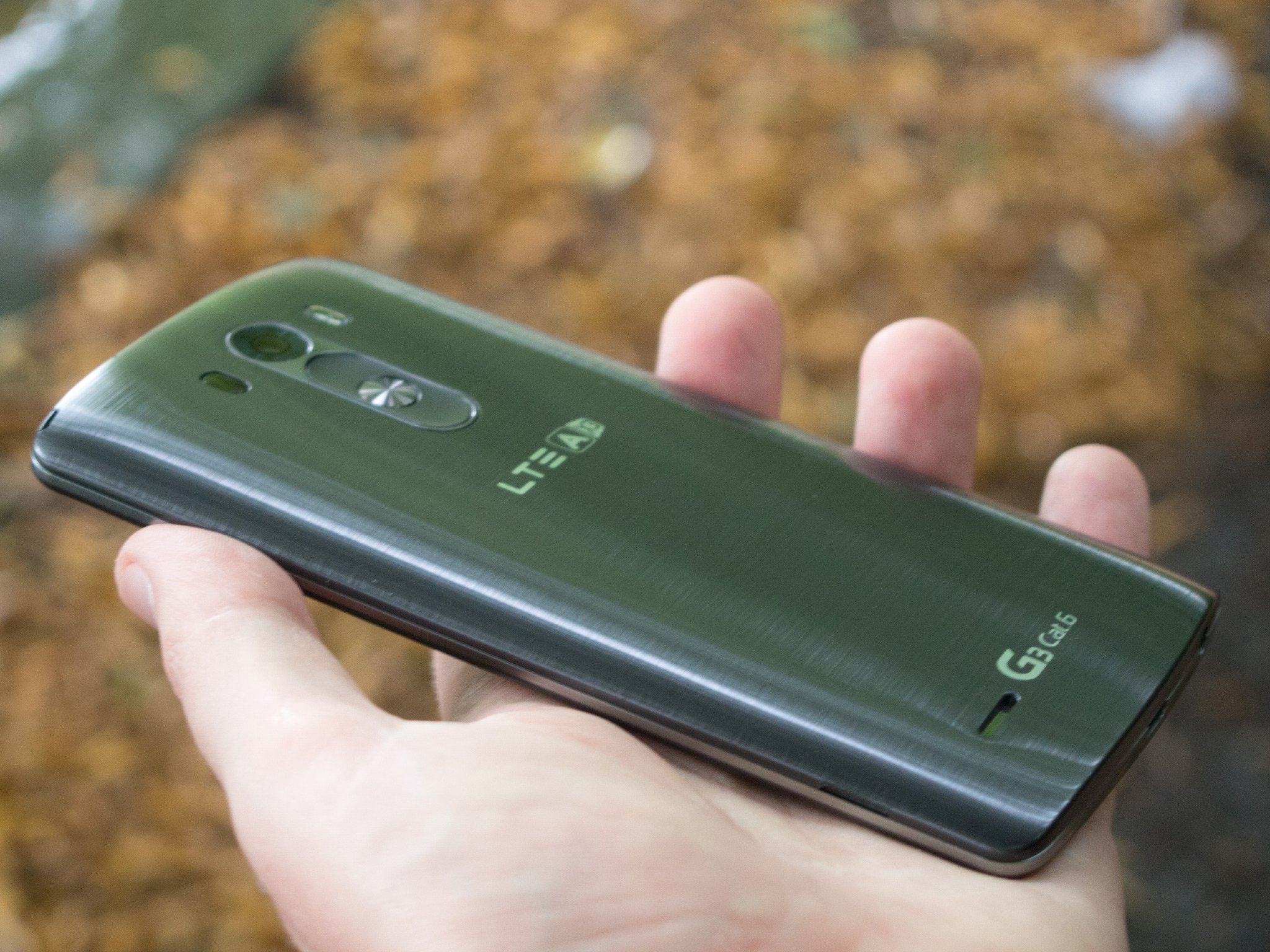
We take a look at LG's supercharged, Korea-only G3, powered by Qualcomm's latest Snapdragon 805 processor
The LG G3 isn't old news just yet. We've recently reflected on our first couple of months with the phone, and in many countries it's only just making its way out onto the market. But the march of technological progress continues, not least in LG's home country of South Korea, where arch-rival Samsung already has its own 2K-toting, Snapdragon 805-powered version of the Galaxy S5.
LG's answer to the GS5 Broadband LTE-A is the G3 Cat. 6, a turbo-charged version of the G3 with support for Korea's super-fast LTE Category 6 networks — but perhaps more importantly, an upgraded CPU and GPU too. The G3 Cat. 6 is powered by a 2.7GHz Snapdragon 805 processor, paired with Qualcomm's latest Adreno 420 GPU, a step up from the Snapdragon 801-plus-Adreno 330 of the original G3.
The G3 Cat. 6 is a Korea-only product, and LG tells us there are no plans to launch this version internationally. (Though it is available to import.) But that's not going to stop us tearing into the new G3's hardware and seeing how it measures up to the original. Read on to find out more.
About this review
We're publishing this review after a week with the SKT version of the LG G3 Cat. 6 — LG-F460S — running software version 10F. While this G3 isn't properly tuned for European networks, it does support a bevy of LTE bands including Band 3 (1800MHz), the main band used by EE in the UK.

Our review unit was provided by 28mobile.com, a Hong Kong-based, Swedish-owned smartphone importer. If you're interested in picking up an LG G3 Cat. 6 of your own, 28mobile ships worldwide and offers a 28-day money-back guarantee. Prices start at A$885 (US$825).
Video walkthrough
LG G3 Cat. 6 hardware
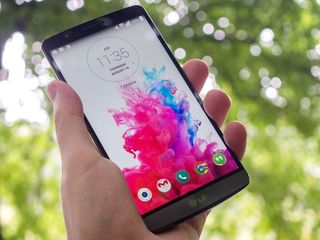
To the untrained eye, both the LG G3 Cat. 6 and the regular G3 are almost indistinguishable — externally, and especially when viewed from the front, they're pretty much the same phone. The front is dominated by that gigantic 5.5-inch, 2560x1440 display, the back furnished in plastic with a metallic finish. More or less everything we said in our original LG G3 review holds true here too — the G3 Cat. 6 is about as comfortable as it's possible to make a 5.5-inch smartphone — and the back, while decidedly plasticky, doesn't attract fingerprints the way some older Samsung phones do.
Be an expert in 5 minutes
Get the latest news from Android Central, your trusted companion in the world of Android
This thing still looks and feels like a G3.
There are some subtle hardware tweaks to note, though. Being a Korean G3, you get the nifty extendable TV antenna that protrudes from the top of the device — though as before, the preloaded TV app doesn't do anything outside of Korea. And things are arranged differently behind the battery door, too. The microSD and microSIM slots now live on either side of the rear buttons, and a notch at the top of the SIM slot makes it easier to remove your SIM card without having to wiggle it free. The gold contacts for NFC and wireless charging have moved around too, so accessories designed for the vanilla G3 likely won't fit the Cat. 6 version.
One thing that hasn't changed is the battery — the G3 Cat. 6 uses the same 3,000mAh unit as the regular G3, and the batteries are interchangeable with the same model number: BL-53YH.
In fact, the Cat. 6, like many Korean smartphones, comes packaged with an extra battery and an external charger (BC-4300). (And usefully, the the charging dock also serves as a portable stand for the phone.)
LG G3 Cat. 6 internals
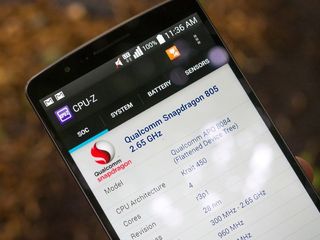
The big changes are on the inside: mainly a beefier CPU and GPU.
The biggest changes are on the inside: The G3 Cat 6 steps up to a 2.7GHz Qualcomm Snapdragon 805 processor (APQ8084), while keeping the 3GB of RAM and 32GB of storage seen in the higher-specced OG G3. In addition to upping the clock speed, Snapdragon 805 uses Qualcomm's updated Krait 450 microarchitecture, and is paired with the company's new, 4K-capable Adreno 420 GPU. Since in some instances the Snapdragon 801-based G3 seemed to struggle a little with the device's enormous resolution, we were curious to see how the new model, with its updated GPU, would fare. And as we'll discuss later, there's a definite performance increase to be seen, both in synthetic benchmarks and day-to-day use.
We can't review a G3 without commenting once again on its enormous, high-resolution display. For the most part the Cat. 6 is a repeat performance of what we've seen from earlier G3 models: you've got 2560x1440 pixels spread across 5.5 inches of real estate. LG has been tweaking the contrast-boosting characteristics of the G3s display since the device's initial release, making images appear less over-saturated on recent firmware releases.
In any case, what we see on the G3 Cat. 6's display is very similar to the screen of our European review unit (LG-D855). There's a noticeable difference in white balance — colors appear cooler on our Euro model, whereas the Cat. 6 has as yellowish hue to it. It's not clear whether this is due to different software tuning or variances in the panel itself. Nevertheless, these are changes you probably won't notice unless you're holding both side by side.
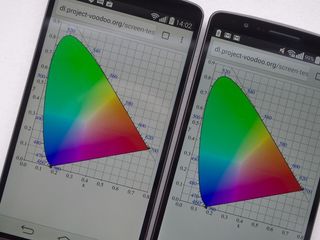
Viewing color charts on both devices reveals a similar pattern of contrast-boosting being used, too — fairly uniform across most colors, though with some weird artifacting in the reds, indicative of more aggressive over-saturation in that color. Bottom line: Like the regular G3, the Cat 6's panel looks perfectly fine. Colors don't appear as vivid as some rival LCDs, not to mention AMOLED, but for day-to-day use we have no qualms with the display of either model.
And while neither G3 burns as bright as Samsung's SuperAMOLED on the Galaxy S5, we've had no trouble using the G3 Cat. 6 — or any G3, for that matter — outdoors in bright conditions.
You'll need to be in Korea to take advantage of those ridiculous Cat 6 network speeds.
On the networking side, the big news on G3 Cat. 6 is the one thing we can't test here in the UK — Category 6 LTE speeds of up to 300Mbps. Since that's what this G3 is named for, chances are that's what LG believes will draw customers in in South Korea. Despite the lack of Cat. 6 networks in the UK, our SKT-branded model was able to connect to EE's 1800MHz LTE network, delivering speeds comparable with the Euro-specific model.
Since this Korean phone isn't tuned for networks outside of that country, it takes longer to lock onto LTE than the European G3 after first booting — it's often up to ten minutes before the Cat. 6 picks up a 4G signal for the first time. However this only seems to be a problem when first connecting to the network — once it had locked on, the connection was stable and fast. And the device was quick to pick up LTE once again when moving between coverage areas.
Quick comparison: LG G3 versus LG G3 Cat. 6 specs
| Category | LG G3 | LG G3 Cat. 6 |
|---|---|---|
| CPU | Qualcomm Snapdragon 801 at 2.5GHzAdreno 330 GPU | Qualcomm Snapdragon 805 at 2.7GHzAdreno 420 GPU |
| Dimensions | 46.3 x 74.6 x 8.9mm | |
| Weight | 149g | 150g |
| Display | 5.5 inch, Quad HD IPS LCD (2560x1440) | |
| Platform | Android 4.4.2 KitKat with LG UI | |
| Internal Storage | 16/32GB + microSD up to 128GB | 32GB + microSD up to 128GB |
| RAM | 2/3GB | 3GB |
| Built-in Wireless Charging | Yes (outside of U.S./Korea) | No |
| Battery | 3,000mAh removable (BL-53YH) | |
| LTE max speeds | 150Mbps | 300Mbps |
| Carrier availability | Global | South Korea: SKT, KT |
LG G3 Cat. 6 performance and battery life
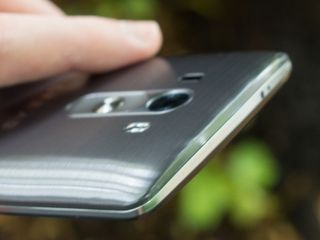
With an updated CPU microarchitecture, faster clock speeds and an upgraded GPU, you'd expect the LG G3 Cat. 6 to be faster than the regular version, and that's exactly what we found in day-to-day use and in benchmarking apps.
The Snapdragon 805-powered G3 is indeed faster, and the difference — to us — is noticeable.
Over the past couple of months LG has been improving scrolling performance and animation smoothness in successive software updates for the European G3; nevertheless, the Snapdragon 805-powered G3 is faster, and the difference — to us — is noticeable. Touch input is a little more responsive. Certain apps, and parts of LG's launcher are faster, and scrolling speeds are quicker across the board, likely due to the faster GPU. Is it as perfectly smooth as some devices we've seen from HTC? Not quite, but it's smooth to the point where any animation stutters are a rare enough occurrence that they're basically a non-issue.
The G3 Cat. 6 is also slightly quicker to boot up than its predecessor, springing to life around five seconds faster from a cold boot.
| Benchmark | LG G3 (D855 2GB) | LG G3 Cat. 6 (F460S) |
|---|---|---|
| Antutu | 28182 | 31831 |
| Quadrant | 23378 | 24250 |
| Vellamo Metal | 1384 | 1533 |
| GFXBench Manhattan | 378 | 443 |
| GFXBench T-rex | 851 | 1017 |
| GFXBench Battery | 172 | 175 |
| Epic Citadel (Ultra HQ) | 34 | 40 |
When it comes to synthetic benchmarks, the broad strokes are this: a small but significant bump in performance in CPU-bound benchmarks like Vellamo's Metal, but more noticeable gains in GPU-bound tests like GFXBench — particularly in the demanding Manhattan test sequence, which uses OpenGL ES 3.0. Thermal throttling seemed to take less of a toll on the Snapdragon 805-based G3 compared to the 801-based model, as GFXBench tests showed less tail-off in frame rates with successive runs.
On the whole, the benchmark results paint a picture of an SoC that's more comfortable throwing around QHD content than its predecessor — making the G3 Cat. 6 a more capable gaming device as a result. It also backs up our anecdotal findings using the Cat. 6 over the past week — this is indeed a smoother, faster G3.
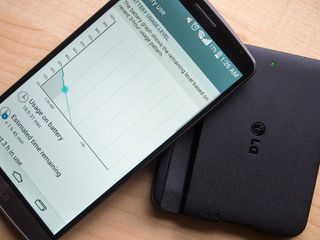
Battery life is virtually identical to the Snapdragon 801-based G3.
In benchmarks and real-world testing, battery life has been virtually identical to the Snapdragon 801-based G3, so you're not sacrificing longevity for that speed boost. Scores in GFXBench's battery life test, which continually loops the T-rex demo sequence, are within a few minutes of each other. And using the G3 out and about on LTE and Wifi, our performance mirrored that of the original G3 — around 16 to 17 hours between charges, with around 4 to 4.5 hours of screen on time. (Though push it hard, especially on LTE, and you'll be able to deplete the bundled 3,000mAh battery in as little as 10 hours.)
The G3 Cat. 6 also includes a "Sync optimization" feature designed to "optimize" the interval at which apps sync to save power. We've seen similar software features on Sony phones in the past, though curiously we're not seeing it on any of the existing G3 models. The idea is similar to the thinking behind "Project Volta" in Android L — group apps' requests for background data together and then allow them to sync on a set schedule, rather than waking the device arbitrarily. That said, we didn't notice any substantial impact on battery life when using this setting; your mileage may vary depending on how much stuff you've got syncing in the background.
Finally, for those wondering, the optional (and still experimental) ART runtime is available on the G3 Cat. 6, however we noticed at least one show-stopping bug when using the pre-release runtime — the phone would take a couple of seconds to wake when pressing the power button or using KnockOn. ART has been hit and miss on other G3 models too, so that's not too surprising.
LG G3 Cat. 6 software
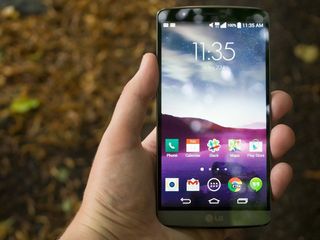
If you've seen the LG G3's software, you've seen the Cat. 6's software. Aside from the fact that things are generally faster, this is the same user experience you'll find on any G3. What is different on our model is the hefty helping of bundled apps. We won't tar them all as bloatware, as we're not sure what they all do, but they do resemble the kind of preloaded apps you find on carrier-branded phones in the West.
The SKT-branded variant we're using also has its own optional skin, which takes over the dialer, contacts app and other parts of the system, giving SKT's choice of UI, not LG's. This choice is provided during setup, though you can change it later in the Settings app.
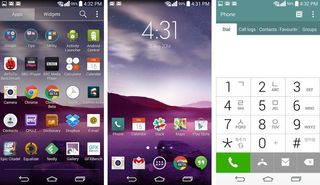
Most of SKT's bloat is easy to ignore, uninstall or disable.
Importers will be happy to learn that the vast majority of SKT's bloat is easy to ignore, remove or disable. If you are importing a G3 Cat. 6, you'll need to mess with the roaming settings page to disable the roaming clock, which defaults on when the device is outside of Korea. Only problem? You need to be roaming in order to access this menu. If you've got a foreign SIM to hand then you can put it in, change the setting, then swap back to your regular SIM.
Beyond that, the G3 Cat. 6 functions as any other G3. LG's muted, pared back UI may not have the polish of HTC Sense or Google's Material Design, but clean and modern looking, and an improvement on what's come before. And of course you've got useful features like KnockOn to wake the phone with a double-tap, and KnockCode to add security with a pattern of taps.
For the full story on the LG G3's software, check out our review of the Snapdragon 801-based model.
LG G3 Cat. 6 camera
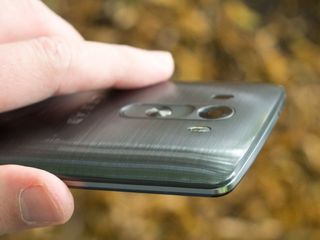
As we've said again and again, the LG G3's 13-megapixel, laser-flanked camera is among the best on an Android phone, delivering good-looking shots in both daylight and low-light situations — and with OIS+ to make video smoother, and allow for longer night-time exposures.








You're still limited to five minutes of 4K video at a time.
Again, this is another area that's mostly unchanged. We don't know for sure that LG's using the exact same camera module as before, but whatever's going on under the hood, our sample shots on both G3s look identical. Same deal with video — both G3s shoot at up to 4K resolution, doing so with a bit rate of 30Mbps.
Unfortunately the Cat. 6 G3 has the same limit on 4K footage as the original. You can only record five minutes of video at a time — a limit likely put in place to stop it overheating with extended 4K video recording. It's bad news for anyone planning on recording an epic on their phone, but we're sure most original G3 owners will never run into this barrier.
LG G3 Cat. 6: The bottom line
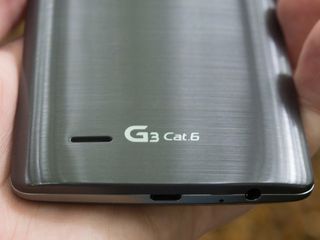
It's the LG G3, but faster.
The LG G3 is a great phone with a Snapdragon 801 processor, and with beefed-up performance (and relatively few other changes) the same can be said of the G3 Cat. 6. It's a phone which addresses our great standing complaint with its international cousin — essentially, this is the LG G3, but faster. Aside from performance and a handful of software tricks, this is the same G3 we know and love. The display, battery life and in-hand feel all more or less match that of the older model.
LG has no plans to sell the G3 Cat. 6 internationally, mainly due to the lack of Cat. 6 LTE networks outside of Korea; that most likely means no Snapdragon 805-based model for global markets either.
So what compromises will you run up against if you opt to import a Korean G3 Cat. 6? Well, you'll want to double-check band coverage first, as LTE support might not be as robust as a phone designed for your particular country. However if you like to venture off the beaten track with your phone purchases, the Korean G3 Cat. 6 is a more exotic option that'll get you faster performance at the cost of dealing with a little bloatware and managing your way around radio frequencies, APNs and network settings. Is that a good trade-off? That depends on what you want out of a smartphone, and how badly you need the latest specs.
For our part, we're just a little bit tempted, and eager to see this chip powering more 2K handsets later in the year.











Alex was with Android Central for over a decade, producing written and video content for the site, and served as global Executive Editor from 2016 to 2022.